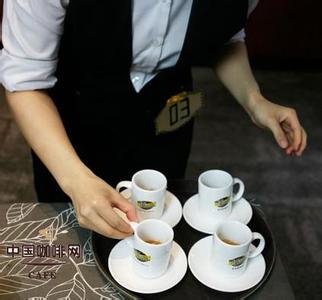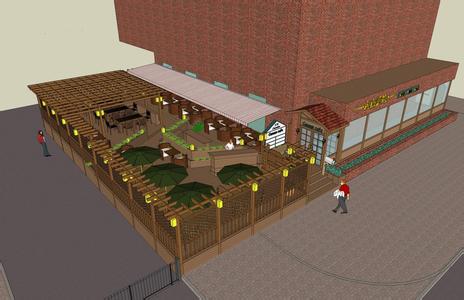Introduction to Kenyan Coffee Bean varieties and characteristics of Brand Story Manor
Introduction to Kenyan Coffee Bean varieties and characteristics of Brand Story Manor
Kenya, the full name of the Republic of Kenya, is located in eastern Africa, the equator runs across the central part of the equator, and the Great Rift Valley of East Africa stretches north and south. It is bordered by Somalia to the east, Tanzania to the south, Uganda to the west, Ethiopia and Sudan to the north, and the Indian Ocean to the southeast. There are many plateaus in the territory, with an average elevation of 1500 meters. The central peak of Kirinaga (Mount Kenya) is 5199 meters above sea level, and the top of the mountain is covered with snow, making it the second highest peak in Africa.
Most Caribbean and Central American countries express quality in terms of altitude. For example, the eastern part of Costa Rica produces LGA (Low Grown Atlantic Atlantic low altitude), MGA (Medium Grown Atlantic Mid-Atlantic altitude) and HGA (High Grown Atlantic Atlantic High altitude); West Bank slopes produce HB (Hard Bean hard beans), MHB (Medium Hard Bean Intermediate hard beans), GHB (Good Hard Bean excellent hard beans) and SHB (Strictly Hard Bean very hard beans). Beans are hard, and the higher the altitude, the higher the price. Costa Rica's best plantations mark their bags and elevations, and like Nicaragua, Costa Rica uses the name of the region with the flavor of the country. Guatemala's elevation is relatively vague, from 700 to 1700 meters above sea level: "Good Washed" (good water washed beans), "Extra Prime Washed" (super water washed beans), "Semi Hard Bean (SH)" semi-hard beans, "Hard Bean (HB)" hard beans, "Fancy Hard Bean" super hard beans and "Stictly Hard Bean (SHB)" very hard beans.
Due to different planting methods, coffee can be divided into three types: forest-semi-forest coffee (Forest or semi-forest coffee), courtyard coffee (Garden coffee) and plantation coffee (Plantation coffee). 60% of the coffee belongs to forest-semi-forest coffee. In such a wild coffee forest, pesticides are not used at all, but biological methods are used to control pests. 35% of the coffee is courtyard coffee. In this kind of coffee garden, the planting is three-dimensional. Coffee is located in the lower layer and gets a suitable growth environment in the shade of other crops. Fertilizers are mainly fallen leaves, withered grass and animal manure. 5% of the coffee belongs to plantation coffee. This is a modern way of growing. Coffee is also grown in a forest, but new varieties are used and planted in rows with other shade trees. Due to different processing methods, coffee can be divided into washed coffee (Washed coffee) and sun-cured coffee (Sun-dried coffee). Washed coffee accounts for 35% of exports. Good quality washed coffee is processed with freshly picked fully ripe fruit, picked carefully and closely monitored by professionals. The picked clean coffee beans are pulped on the day of picking, then fermented, washed, dried and peeled. The humidity of processed coffee beans is kept at about 12%. Sun-cured coffee accounts for 65% of exports. Mainly picked by families, red coffee beans are placed on cement floors or on high tables to dry to about 11.5% humidity, then peeled and cleaned.

Important Notice :
前街咖啡 FrontStreet Coffee has moved to new addredd:
FrontStreet Coffee Address: 315,Donghua East Road,GuangZhou
Tel:020 38364473
- Prev

Flavor description of Brazilian Hartmann washed Rosa Coffee beans introduction to the production area of Grinding Calibration method
Flavor description of Brazilian Hartmann washed Rosa Coffee beans the story of Hartman, like its coffee, is as legendary as the grinding scale. Hartman Manor is located in Chilidge, Santa Clara. The founder's name is Ellis Strauss Hartman. He was born on June 20, 1891 in the Moravilla region of Austria and Hungary, now the Czech Communist Party.
- Next

Introduction to the processing environment of coffee beans in Xipi Waterfall, Uganda
History of the processing of coffee beans in Sippi Falls, Uganda: Entebbe is the most famous European's home international airport, which was first opened in 1929. Also from this airport, Queen Elizabeth II of England left Africa and returned to England in 1952 when she learned that her father had died and that she had become queen. Entebbe also hosted the final
Related
- Detailed explanation of Jadeite planting Land in Panamanian Jadeite Manor introduction to the grading system of Jadeite competitive bidding, Red bid, Green bid and Rose Summer
- Story of Coffee planting in Brenka region of Costa Rica Stonehenge Manor anaerobic heavy honey treatment of flavor mouth
- What's on the barrel of Blue Mountain Coffee beans?
- Can American coffee also pull flowers? How to use hot American style to pull out a good-looking pattern?
- Can you make a cold extract with coffee beans? What is the right proportion for cold-extracted coffee formula?
- Indonesian PWN Gold Mandrine Coffee Origin Features Flavor How to Chong? Mandolin coffee is American.
- A brief introduction to the flavor characteristics of Brazilian yellow bourbon coffee beans
- What is the effect of different water quality on the flavor of cold-extracted coffee? What kind of water is best for brewing coffee?
- Why do you think of Rose Summer whenever you mention Panamanian coffee?
- Introduction to the characteristics of authentic blue mountain coffee bean producing areas? What is the CIB Coffee Authority in Jamaica?

